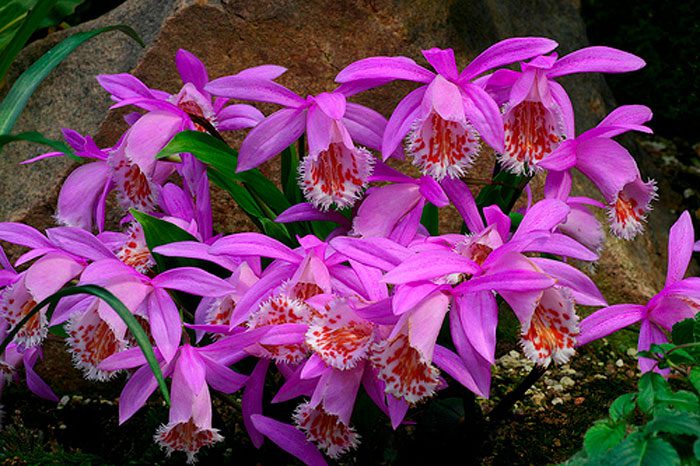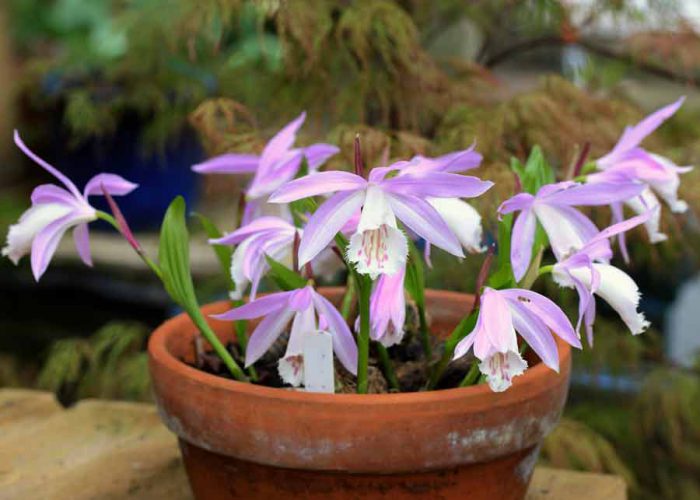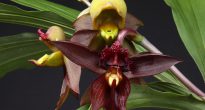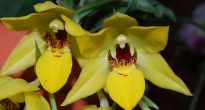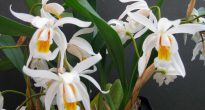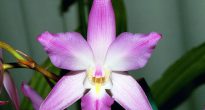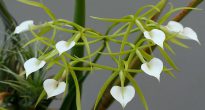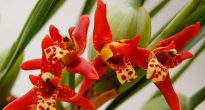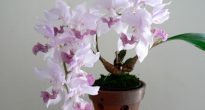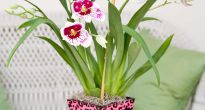The not very large genus Pleione belongs to the Orchid family. This genus unites about 20 species, most of which are terrestrial plants. In natural conditions, they are found in the forests of Burma, Thailand, India, Laos, Taiwan, and also in the foothills of the Himalayas, Nepal and Tibet.
Such a deciduous plant, which has a sympoidal growth pattern, is rather short. Not very large pseudobulbs have a spherical shape, tapering towards the top. They are collected in fairly dense groups. Each of the pseudobulbs is active for 12 months. In spring, 1 or 2 leaves appear from the upper part of the pseudobulb, reaching from 10 to 20 centimeters in length. Such long-stemmed leaves have a lanceolate or elliptical shape. Leathery soft leaves seem to be pleated along the central and lateral (parallel to the leaf plate itself) veins.
With the onset of the autumn period, all the leaves of the playone wither and completely die off, and also at this time the flowering period begins. Long stalks grow from the base of the bulbs and are single-flowered. These home-grown orchids have fairly large flowers that can reach 10 centimeters in diameter. The flower's central petals have grown together in such a way that they form an elongated tube with a distinctly fringed lip, often colored in a contrasting shade. The remaining 5 long petals, which have a lanceolate shape, are arranged in such a way that they form a narrow-beam asterisk, in which the rays located below are slightly apart.
Thanks to breeders, more than 150 varieties of playon were born, which differ in color and size of flowers. So, there are both varieties with multicolored flowers and monochrome ones. For example, in the Tongariro variety, the corolla is light purple, the inner surface of the tube is white, and there are also dark purple spots on it. The “Shantung” variety has flowers of a rich yellow color, while on the surface of the lip there is one relatively large shapeless spot. The "Snowcap" variety has white flowers.
Content
Home care for the playone orchid
This plant is usually grown as a garden plant. However, if certain conditions are created for him, then it may well grow indoors.
Illumination
He needs a fairly intense, but diffused lighting. Shading is required from direct sunlight. For placement, it is recommended to choose windows with an east or west orientation. On such windowsills, this orchid will receive a sufficient amount of light and at the same time it will not be hot.
Temperature regime
During intensive growth, it needs moderate temperatures from 18 to 22 degrees. The playone reacts extremely negatively to the heat.
Dormant period
After flowering ends and all the leaves fall off, the remaining pseudobulbs are transferred to a cool place for storage. However, you should choose a room in which the temperature will be above 2–5 degrees, otherwise this kind of orchid may freeze.
Experienced flower growers use various methods of storing pseudobulbs. So, the container with the plant can be rearranged into the basement, but only those that do not freeze. You can also take out the previously well-dried pseudobulbs, cut off all the roots, leaving a couple of centimeters from them, wrap them in a cellophane bag or paper and put them in a regular refrigerator on a shelf designed for storing fruits. However, such pseudobulbs must be monitored. So, they should not dry out, and it is also not necessary to allow condensation to accumulate on the walls of the bag.
How to water
During intensive growth, watering should be abundant. In this case, the substrate should be constantly moist.
Only soft water is used for irrigation. In the event that tap water is taken for this purpose, then it must be well settled, and if necessary, it can be filtered.
Air humidity
During the growing season, it needs slightly high humidity up to 60 percent. To increase humidity, it is recommended to systematically moisturize the foliage from a sprayer. And you can pour expanded clay into the pallet and pour in a small amount of water.
Fertilizer
Top dressing is carried out once a week from March to October. To do this, use a special fertilizer for orchids.
After the foliage begins to turn yellow in the autumn, fertilization of the soil stops.
Earth mix
For planting this plant, a special loose substrate is needed, which will allow air to pass through very well, and at the same time retain moisture. Such a dredge, as a rule, consists of fine bark, crushed sphagnum and vermicompost, which should be taken in equal parts.
You need to plant the playone in a wide and low pot. Do not forget to make a good drainage layer of expanded clay at the bottom, which will help to avoid stagnation of liquid in the soil.
Transplant features
The transplant is carried out once a year in the spring. After transplanting, make sure the tops of the pseudobulbs are not buried in the substrate. Approximately ¼ of them should rise above the soil surface.
During the transplant, you need to remove faded, old, wrinkled pseudobulbs.
Reproduction methods
In spring, young pseudobulbs can be separated from the base of the mother plant and planted separately.
Pests and diseases
The plant can settle mealybugs and spider mites... After the pests are found, the orchid needs to arrange a warm shower, during which all the leaves are thoroughly rinsed. In this case, you should first protect the substrate from water from the water supply system. If harmful insects have not been completely destroyed, then treatment with appropriate chemicals is carried out.
Very often, the plant is sick with a variety of rot, which appear as a result of violations of the rules of care.

